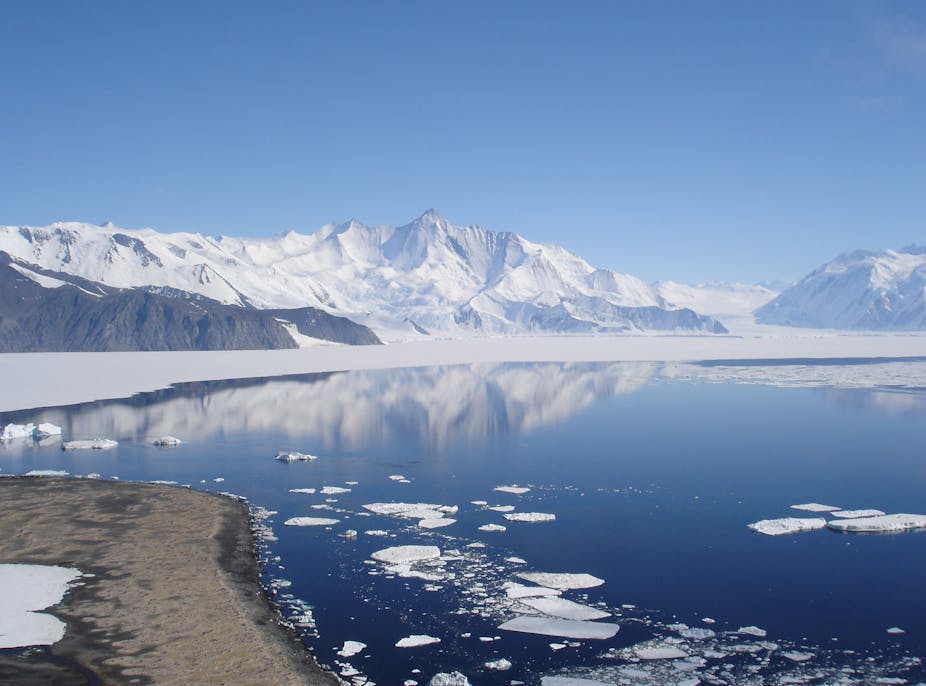Lead pollution from Australia reached Antarctica in 1889 – long before the frozen continent’s golden age of exploration – and has remained there ever since, new research shows.
In our study, published in Nature Scientific Reports, my colleagues and I used ice core samples from West and East Antarctica to reveal the continent’s long and persistent history of heavy metal pollution.
The Antarctic remains the most remote and pristine place on Earth. Yet despite its isolation, our findings show that it has not escaped contamination from traces of industrial lead, a serious pollutant and neurotoxin. The levels of lead pollution found in the ice cores is too low to impact Antarctic ecosystems, but higher levels would be expected closer to sources.
Isolated outpost
Antarctica’s isolation gives us a unique vantage point to investigate large-scale changes in the Earth system, and the influence of humanity.
The new study, led by Dr Joe McConnell of the Desert Research Institute in Nevada, used an array of Antarctic ice cores to reveal a detailed record of where and when pollution can be found.
The first trace of lead pollution arrived in Antarctica around 1889, 22 years before the Amundsen and Scott expeditions to the South Pole.
We also discovered that lead pollution in the Antarctic peaked twice, and that in both cases Australia was the primary source.
After an initial peak in the late 1920s, lead levels dropped in sync with the Great Depression and Second World War. The pollution peaked again in about 1975.
Today, although levels are lower than at the 1975 peak, they remain at roughly three times the pre-industrial level.
Straight from source
How do we know where this pollution came from? Lead ore deposits contain a unique combination of lead isotopes (atoms with the same number of protons, but different number of neutrons) that can be used like a fingerprint to determine the original sources and how different sources are mixed.
Lead from the Antarctic samples has the same fingerprint as lead from Broken Hill, New South Wales – an old mining town with significant lead deposits.
Earlier studies (see here, here, here and here) have implicated Broken Hill in polluting the Antarctic, but our study gives this conclusion far more evidence.
We used ice cores from many locations, spanning several thousand kilometres, where previously only a handful of records were available, with long periods missing from the historical record.
The cores had to be shipped to the United States to be analysed, although future studies can be carried out in Australia, at the new Trace Research Advanced Clean Environment (TRACE) facility, which will allow us to detect the presence of miniscule amounts of contamination.
More analysis will help us unlock more of Antarctica’s secrets. If you’ll excuse the pun, our latest results are just the tip of the iceberg with regard to information stored in the Antarctic ice sheet.
For example, fires in the Southern Hemisphere have left traces in the ice and a history of climate. The history of persistent organic pollutants and mercury in the remote south are still poorly known. Colleagues at CSIRO and the Australian Nuclear Science Technology Organisation are using ice cores to understand the past variability of greenhouse gases and the Sun. Combined with records from tree rings, sediments and caves, ice cores help to recreate a large-scale reconstruction of past sea level pressure.
Meanwhile, Antarctica continues to serve as a sentinel for unintended consequences of human activities – in this case, the pollution of a pristine frozen wasteland by an Australian mining product.

